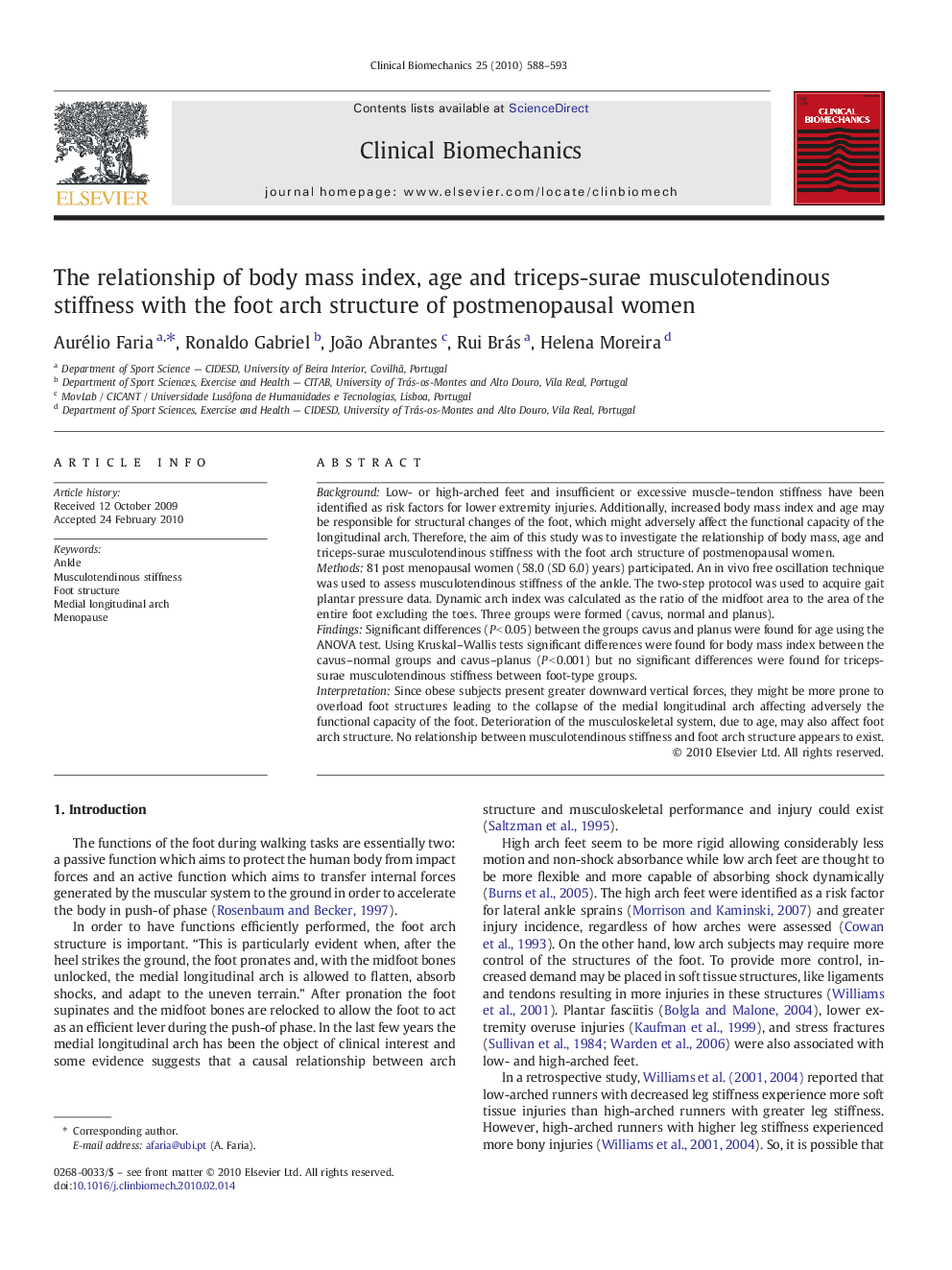| Article ID | Journal | Published Year | Pages | File Type |
|---|---|---|---|---|
| 4050748 | Clinical Biomechanics | 2010 | 6 Pages |
BackgroundLow- or high-arched feet and insufficient or excessive muscle–tendon stiffness have been identified as risk factors for lower extremity injuries. Additionally, increased body mass index and age may be responsible for structural changes of the foot, which might adversely affect the functional capacity of the longitudinal arch. Therefore, the aim of this study was to investigate the relationship of body mass, age and triceps-surae musculotendinous stiffness with the foot arch structure of postmenopausal women.Methods81 post menopausal women (58.0 (SD 6.0) years) participated. An in vivo free oscillation technique was used to assess musculotendinous stiffness of the ankle. The two-step protocol was used to acquire gait plantar pressure data. Dynamic arch index was calculated as the ratio of the midfoot area to the area of the entire foot excluding the toes. Three groups were formed (cavus, normal and planus).FindingsSignificant differences (P < 0.05) between the groups cavus and planus were found for age using the ANOVA test. Using Kruskal–Wallis tests significant differences were found for body mass index between the cavus–normal groups and cavus–planus (P < 0.001) but no significant differences were found for triceps-surae musculotendinous stiffness between foot-type groups.InterpretationSince obese subjects present greater downward vertical forces, they might be more prone to overload foot structures leading to the collapse of the medial longitudinal arch affecting adversely the functional capacity of the foot. Deterioration of the musculoskeletal system, due to age, may also affect foot arch structure. No relationship between musculotendinous stiffness and foot arch structure appears to exist.
